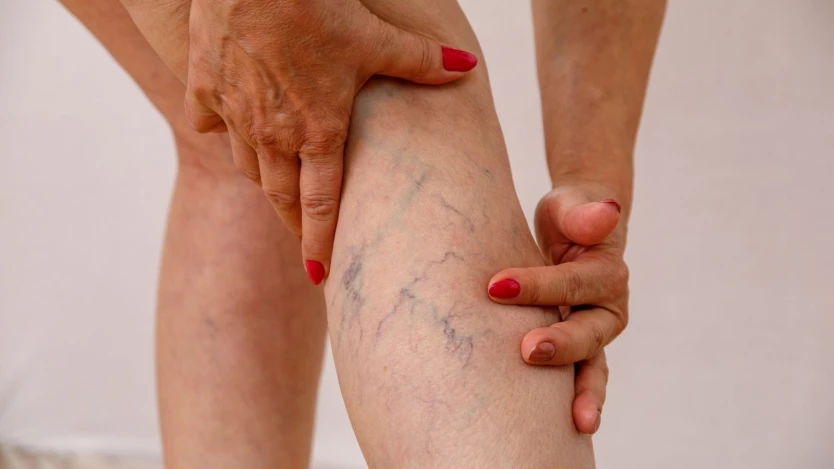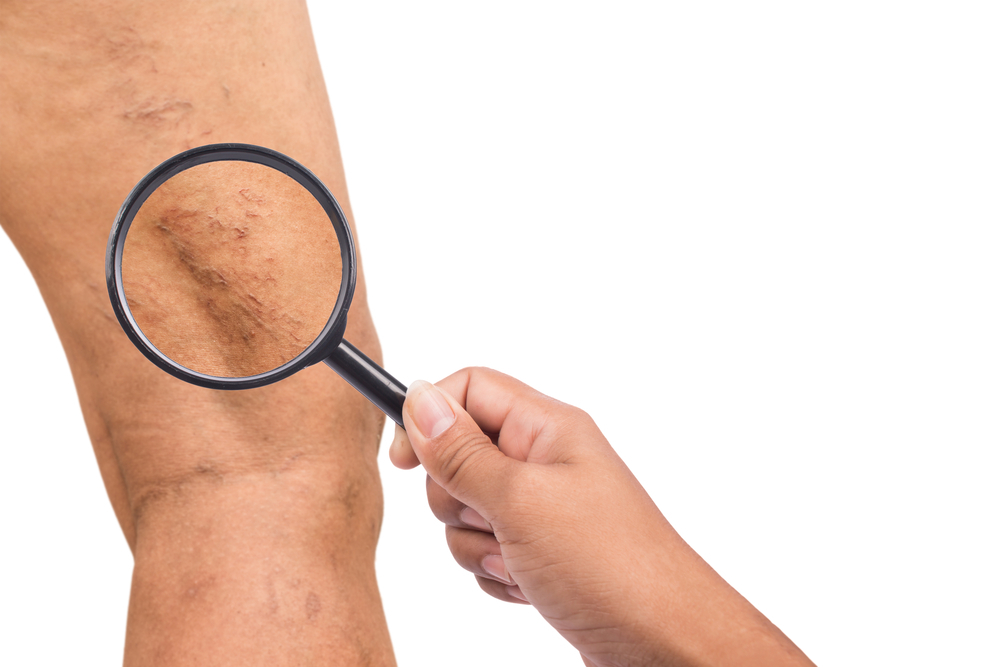Top 10 Symptoms of Varicose Veins: Early Warning Signs and How to Address Them
Varicose veins are a common condition that affects millions of people worldwide. They occur when the valves inside the veins weaken, causing blood to pool and the veins to enlarge. While varicose veins are often considered a cosmetic concern, they can lead to a variety of symptoms that impact daily life and overall health. Understanding these symptoms early can help individuals seek timely treatment and prevent further complications.10 Symptoms of Varicose Veins
In this article, we’ll explore the top 10 symptoms of varicose veins, their causes, and what you can do to manage and treat them.

1. Visible, Twisted Veins
The most obvious symptom of varicose veins is the appearance of enlarged, twisted, and bulging veins just beneath the skin. These veins are often dark blue or purple and tend to develop on the legs, especially the calves and thighs. The visible appearance of varicose veins is usually the first sign people notice, and while it may initially seem like a cosmetic issue, it often signals deeper problems with blood flow.
Why it Happens:
Varicose veins develop when the valves within the veins fail to function properly, allowing blood to flow backward and pool in the veins. This causes the veins to enlarge and become more visible.
2. Aching or Heaviness in the Legs
One of the most common symptoms of varicose veins is a feeling of heaviness or aching in the legs. This discomfort typically worsens after long periods of standing or sitting and is often more noticeable at the end of the day.
Why it Happens:
The pooling of blood in the veins increases pressure, leading to a sensation of heaviness or fatigue in the legs. This symptom can also be exacerbated by long periods of inactivity, as standing or sitting for too long reduces circulation.
3. Swelling in the Legs, Ankles, or Feet
Swelling (edema) in the lower legs, ankles, and feet is another frequent symptom of varicose veins. This swelling may be mild initially but can become more severe as the condition progresses. In some cases, the swelling is accompanied by a feeling of tightness in the skin.
Why it Happens:
As blood pools in the veins due to improper circulation, fluid can leak into the surrounding tissues, causing swelling. Swelling often worsens with prolonged standing or sitting and can be relieved by elevating the legs.
4. Itching or Irritated Skin
Varicose veins can lead to itching or a feeling of irritation around the affected areas, particularly on the skin over the veins. This is sometimes a precursor to more severe skin conditions, such as varicose eczema or stasis dermatitis.
Why it Happens:
When blood pools in the veins, the skin becomes deprived of adequate nutrients and oxygen. This can lead to dryness, irritation, and itching, particularly around the varicose veins.
5. Restless Legs
Restless leg syndrome (RLS) is a condition that causes an overwhelming urge to move the legs, especially at night. Many people with varicose veins report feeling this discomfort, making it difficult to relax or sleep.
Why it Happens:
While the exact cause of RLS is not fully understood, it is believed that poor circulation in the legs due to varicose veins can contribute to the sensation of restlessness or discomfort.
6. Cramping or Throbbing Pain in the Legs
Leg cramps, particularly at night, are a common symptom of varicose veins. These cramps are often described as a sharp, throbbing pain that can disturb sleep and interfere with daily activities.
Why it Happens:
Poor circulation in the legs can lead to muscle fatigue and spasms, resulting in painful cramps. The lack of proper blood flow and the pooling of blood in the veins are significant contributors to this symptom.
7. Skin Discoloration
Skin discoloration around the ankles and lower legs is another symptom of varicose veins. This discoloration often appears as a brown or reddish tint and can worsen over time if the underlying vein issue is not addressed.
Why it Happens:
Blood leaking from varicose veins into surrounding tissues can cause iron deposits to accumulate in the skin, leading to hyperpigmentation. This is a sign of chronic venous insufficiency and indicates that the condition has progressed.
8. Tight or Hardened Skin (Lipodermatosclerosis)
As varicose veins worsen, the skin around the veins may become tight, thickened, or hardened. This condition, known as lipodermatosclerosis, can make the skin feel firm to the touch and is often accompanied by redness and tenderness.
Why it Happens:
Chronic inflammation caused by poor circulation can lead to scarring and hardening of the skin. Lipodermatosclerosis is a sign of advanced venous insufficiency and requires medical attention to prevent further complications.
9. Venous Ulcers
Venous ulcers are open sores that can develop on the skin, usually around the ankles. They are slow to heal and can be very painful. These ulcers often indicate that varicose veins have progressed to a more serious stage and require immediate medical treatment.
Why it Happens:
Ulcers form when blood pooling in the veins causes the surrounding skin and tissues to break down. The lack of proper blood flow means that the skin does not receive enough oxygen and nutrients to heal, leading to the formation of open sores.
10. Bleeding from Varicose Veins
In some cases, varicose veins can cause the skin over them to become thin and fragile, leading to bleeding. Even a minor injury or bump can result in bleeding from the veins, which can be difficult to stop.
Why it Happens:
The veins become more prominent and closer to the surface of the skin as they enlarge. This makes the skin more vulnerable to damage and can lead to bleeding if the veins are injured.

When to Seek Medical Attention
While varicose veins are often seen as a cosmetic issue, the symptoms listed above can lead to serious complications if left untreated. If you experience any of the following, it’s essential to seek medical attention:
- Persistent swelling or pain in the legs
- Skin changes or discoloration
- The development of ulcers or open sores
- Bleeding from varicose veins
A healthcare provider can assess the severity of your condition and recommend appropriate treatments, ranging from conservative measures like compression stockings to more advanced procedures like sclerotherapy or vein stripping.
Treatment Options for Varicose Veins
The treatment for varicose veins largely depends on the severity of the condition and the symptoms experienced. Some common treatment options include:
- Compression Stockings: These help improve blood circulation and reduce swelling, aching, and the risk of skin damage.
- Lifestyle Changes: Regular exercise, weight management, and avoiding long periods of standing or sitting can improve symptoms and prevent the progression of varicose veins.
- Sclerotherapy: A minimally invasive procedure where a solution is injected into the varicose vein, causing it to collapse and eventually fade.
- Laser Treatment: Non-invasive laser procedures can treat varicose veins by closing off the affected veins.
- Surgical Options: In severe cases, surgery may be required to remove or repair the affected veins.
Conclusion
Varicose veins can lead to a range of symptoms, from visible, twisted veins to more serious issues like venous ulcers and skin changes. Recognizing these symptoms early is crucial for preventing complications and managing the condition effectively. If you experience any of the symptoms mentioned, consult a healthcare provider for an accurate diagnosis and appropriate treatment.
A perfect Solution Of Varicose Veins Click Here



